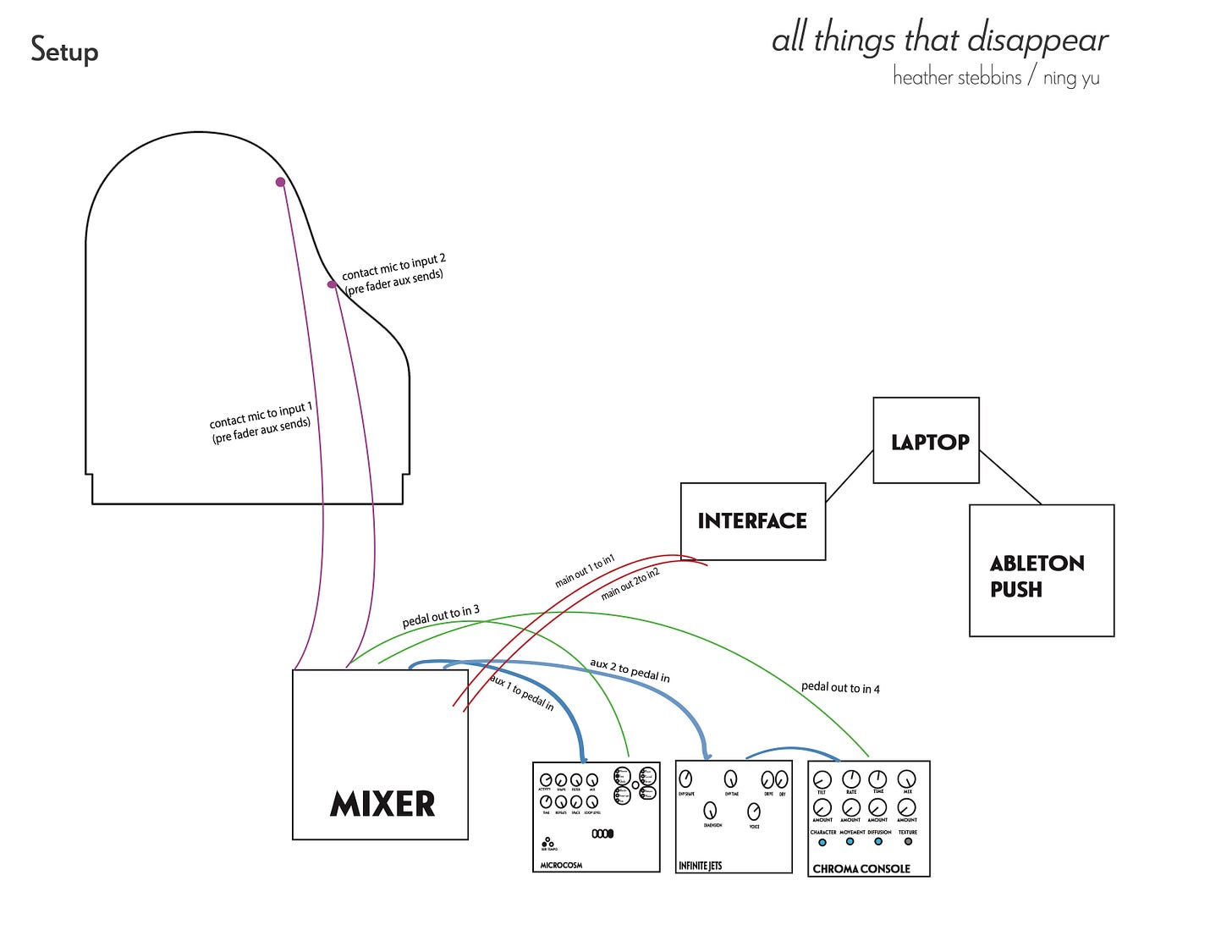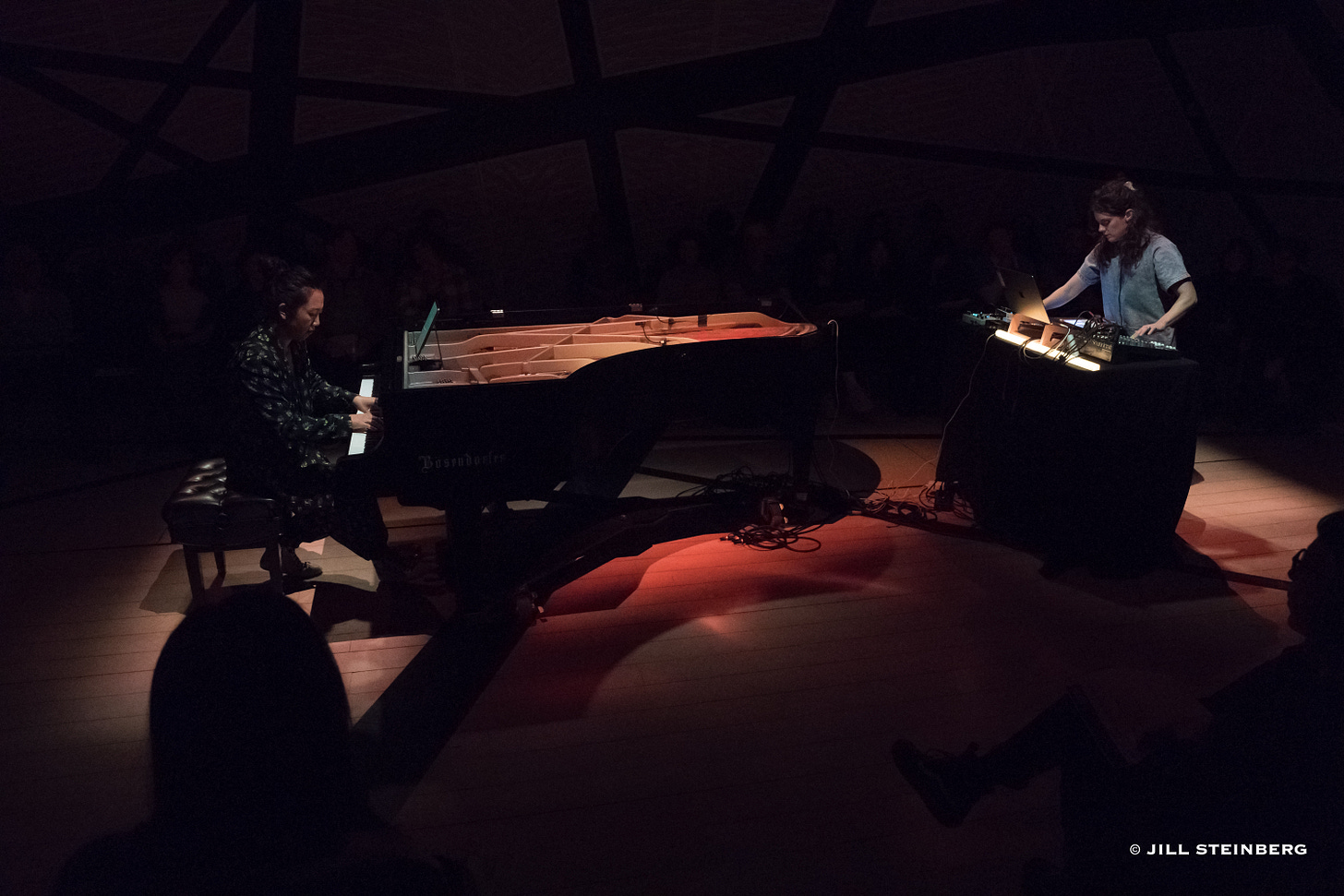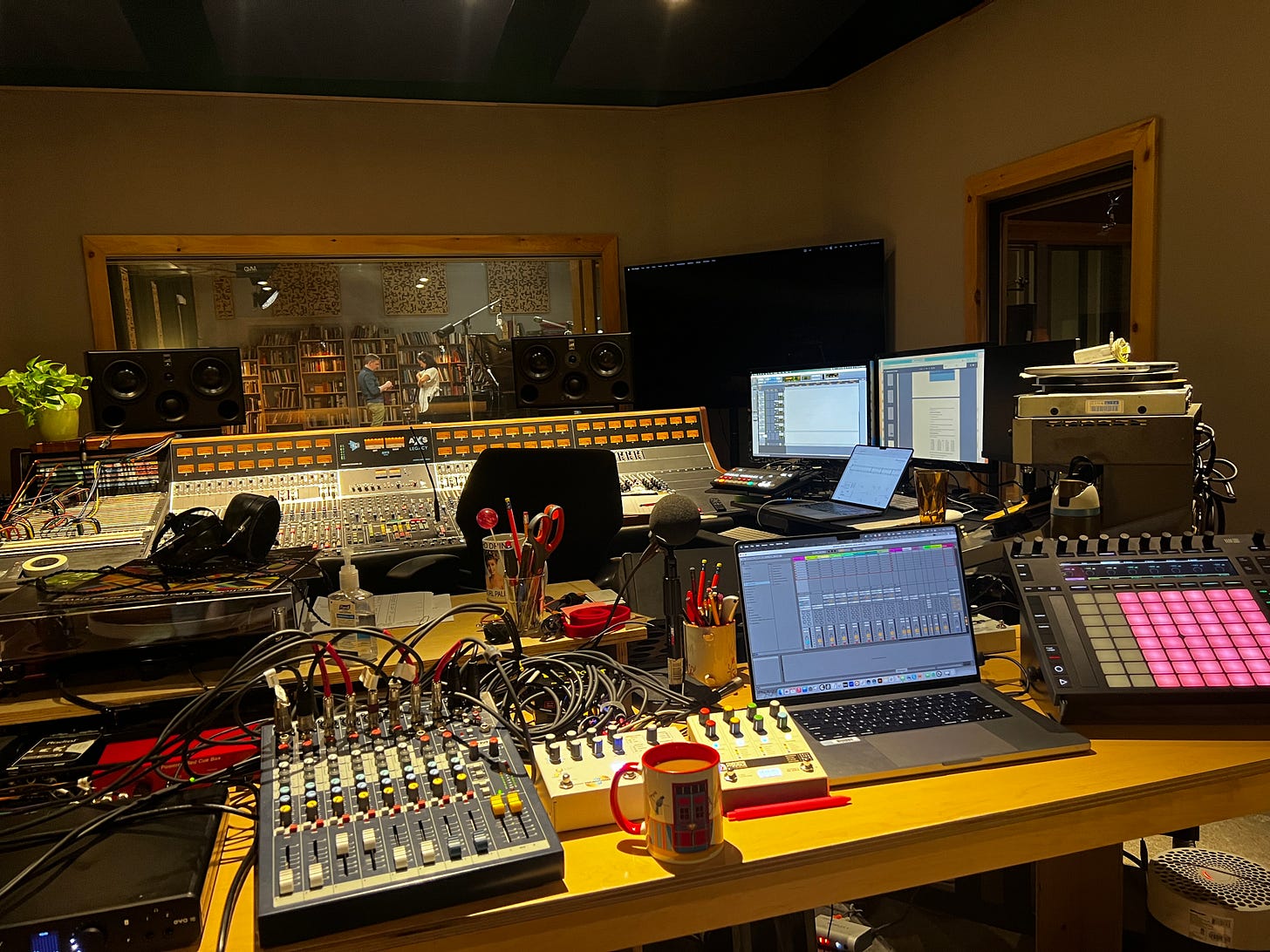About a year ago, my good friend and colleague Ning Yu suggested we try collaborating on a project for piano and electronics. I am admittedly a bit intimidated by writing for the instrument. Where this lack of confidence comes from is not particularly relevant, but it often prevents me from taking projects where the piano is a solo voice. Ning is an incredible performer and musician, and facing that insecurity felt very worth it.
Rather than bringing Ning a fully fleshed out score, we decided to try a more improvisatory approach. In recent years, I’ve returned to performance practice via a hybrid digital/analog/acoustic setup. The immediacy of working with sound in this way jumpstarted a burst of energy in my creative process that I’m still riding, albeit in changing ways.
For the project with Ning, I wanted to augment and distort the piano’s soundworld in a flexible way that would allow me to perform on electronics. What would a piano sound like run through a guitar pedal? Facilitating this involves placing two contact microphones on the piano’s soundboard (I purchased two from Ischell through generous funding from my University, and they sound remarkable) and running their signal through a mixer. I took the auxiliary output from the mixer and fed that signal into a Hologram Infinite Jets, Microcosm, and eventually, Chroma Console. These pedals offer a wide range of processing techniques, providing a large sonic palette to work with, without being too menu-divey, and I’m very grateful to Hologram for sending me a Microcosm to play with (and thanks to my partner for letting me use his Infinite Jets!).
The output of the pedals return to the mixer, and then the main outputs are fed into an audio interface for subtle processing within Ableton Live.
This setup proved to be remarkably effective as an improvisatory playground. Beginning in the Fall of 2023, Ning and I met weekly, and rather than starting each session as a blank slate, we turned to abstract textual and visual prompts by colleague and artist Michele Carlson. Michele’s prompts provided a point of reference during our sessions that helped to ground the almost infinite sonic palette that the pedals and Ableton effects processing provided. Soon, movements of a work began to coalesce; while Ning and I wanted each performance of the work to be its own experience, we developed broad forms to shape the work.
The title, all things that disappear, is a reference to the intangible quality of sound, the often stochastic nature of electronics processing, and unplanned but fortuitous moments that happen during improvisation. We performed three of the movements at National Sawdust in March, taking advantage of their Meyer Constellation System.
In June, we went to Oktaven Audio for part 1 of a recording session. Engineer Ryan Streber helped us capture performances of 6 movements, and we will continue recording later this year.
Below you can hear an unmixed/unmastered recording of one of the movements. There are no samples in this recording - everything you hear stems from the acoustic piano and processing via the guitar pedals and a few choice digital effects.
In this particular movement, Ning begins by strumming on fishing wire strung from the piano’s strings and secured to the lid. The knocks in the second half are various mallets on the frame of the instrument. Guitar pedal delay and convolution reverb round out the electronic processing.
This project continues to challenge my notions of what it means to be a composer. I am excited to continue developing material, and while we’re still label searching, I expect the album to come out next year.





Saw you on Saturday night in Richmond. What a brilliant duo you and Ning were! I could have listened to you two all day. It was a living, breathing composition. Gorgeous!